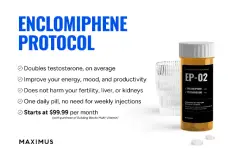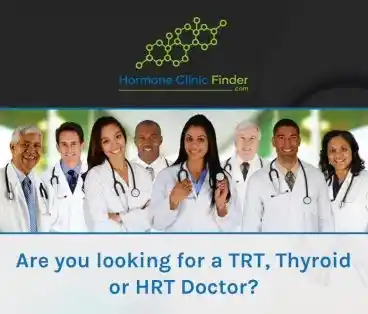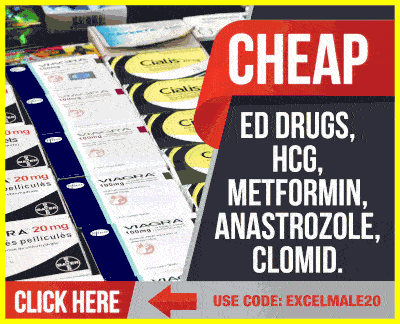madman
Super Moderator
* The study population included men with (i) early morning total testosterone (TT) using LCMS, (ii) free T (FT) measured using equilibrium dialysis, and (iii) who were started on TTH.
* Men using intramuscular or topical testosterone face a higher risk of developing SP than those on oral therapy, with intramuscular posing the highest risk.

EXPLORING THE PREVALENCE OF POLYCYTHEMIA AMONG MEN IN TESTOSTERONE THERAPY
Ahmed F. Elshafei, Amy L. Tin, Daniel Kim*, Nicole Liso, Andrew Vickers,John P. Mulhall, Jose M. Flores, New York, NY
INTRODUCTION AND OBJECTIVE
Elevated hematocrit (HCT) is a frequent side effect in men undergoing testosterone therapy (TTH), increasing the risk of secondary polycythemia (SP). This study aims to describe the prevalence and predictors of elevated HCT in this population.
METHODS
The study population included men with (i) early morning total testosterone (TT) using LCMS, (ii) free T (FT) measured using equilibrium dialysis, and (iii) who were started on TTH. We excluded men who had a history of previous TTH. HCT was evaluated serially after TTH commencement. Low T was defined as TT≤300 ng/dL. SP was defined as HCT≥50%.To assess predictors of SP, we ran separate multivariable Cox regression models with the outcome of SP, adjusted for baseline HCT level. Predictors evaluated were initial TTH type, age, BMI, comorbidities, and smoking history. Patients were censored at the time of their first TTH route change.
RESULTS
The study was conducted on 1,106 men, with 32% receiving initial intramuscular (IMT), 36% receiving oral (OT), and 32% receiving topical testosterone (topT). Median age 59 (IQR 47,68) years, median BMI 29 (IQR 26,33). CAD was observed in 4.7% of the entire group, with a similar rate across all treatment routes. DM, HLD, and HTN rates were comparable across routes, affecting about 16%, 43%, and 43% of patients, respectively. Pulmonary diseases were higher in the OT group (12%) compared to IMT (9.9%) and topT (7.0%). Most participants never smoked (61%), followed by former (32%) and current smokers (6.7%), consistent across routes. The median baseline HCT value was 42 (IQR 39,44), slightly higher in the OT group 43 (IQR 40, 44) compared to IMT (41 (IQR 39, 44)) and topT (41 (IQR 37, 43)). Among our cohort, 135 patients developed SP. The median follow-up among patients who did not develop SP was 2 (IQR 1, 5) years after starting TTH. With the OT route as the reference group for initial TTH administration, there is a significantly higher risk of SP for patients on topT (HR 2.1, 95% CI 1.3–3.5) or IMT (HR 4.5, 95% CI 2.8–7.1). Table 1
CONCLUSIONS
Men using intramuscular or topical testosterone face a higher risk of developing SP than those on oral therapy, with intramuscular posing the highest risk. Although SP can be managed, if left untreated, it may lead to serious complications. This information helps guide treatment choices, balancing the benefits of each route with the need for careful monitoring, especially for those at risk of blood-related issues.
* Men using intramuscular or topical testosterone face a higher risk of developing SP than those on oral therapy, with intramuscular posing the highest risk.
EXPLORING THE PREVALENCE OF POLYCYTHEMIA AMONG MEN IN TESTOSTERONE THERAPY
Ahmed F. Elshafei, Amy L. Tin, Daniel Kim*, Nicole Liso, Andrew Vickers,John P. Mulhall, Jose M. Flores, New York, NY
INTRODUCTION AND OBJECTIVE
Elevated hematocrit (HCT) is a frequent side effect in men undergoing testosterone therapy (TTH), increasing the risk of secondary polycythemia (SP). This study aims to describe the prevalence and predictors of elevated HCT in this population.
METHODS
The study population included men with (i) early morning total testosterone (TT) using LCMS, (ii) free T (FT) measured using equilibrium dialysis, and (iii) who were started on TTH. We excluded men who had a history of previous TTH. HCT was evaluated serially after TTH commencement. Low T was defined as TT≤300 ng/dL. SP was defined as HCT≥50%.To assess predictors of SP, we ran separate multivariable Cox regression models with the outcome of SP, adjusted for baseline HCT level. Predictors evaluated were initial TTH type, age, BMI, comorbidities, and smoking history. Patients were censored at the time of their first TTH route change.
RESULTS
The study was conducted on 1,106 men, with 32% receiving initial intramuscular (IMT), 36% receiving oral (OT), and 32% receiving topical testosterone (topT). Median age 59 (IQR 47,68) years, median BMI 29 (IQR 26,33). CAD was observed in 4.7% of the entire group, with a similar rate across all treatment routes. DM, HLD, and HTN rates were comparable across routes, affecting about 16%, 43%, and 43% of patients, respectively. Pulmonary diseases were higher in the OT group (12%) compared to IMT (9.9%) and topT (7.0%). Most participants never smoked (61%), followed by former (32%) and current smokers (6.7%), consistent across routes. The median baseline HCT value was 42 (IQR 39,44), slightly higher in the OT group 43 (IQR 40, 44) compared to IMT (41 (IQR 39, 44)) and topT (41 (IQR 37, 43)). Among our cohort, 135 patients developed SP. The median follow-up among patients who did not develop SP was 2 (IQR 1, 5) years after starting TTH. With the OT route as the reference group for initial TTH administration, there is a significantly higher risk of SP for patients on topT (HR 2.1, 95% CI 1.3–3.5) or IMT (HR 4.5, 95% CI 2.8–7.1). Table 1
CONCLUSIONS
Men using intramuscular or topical testosterone face a higher risk of developing SP than those on oral therapy, with intramuscular posing the highest risk. Although SP can be managed, if left untreated, it may lead to serious complications. This information helps guide treatment choices, balancing the benefits of each route with the need for careful monitoring, especially for those at risk of blood-related issues.














